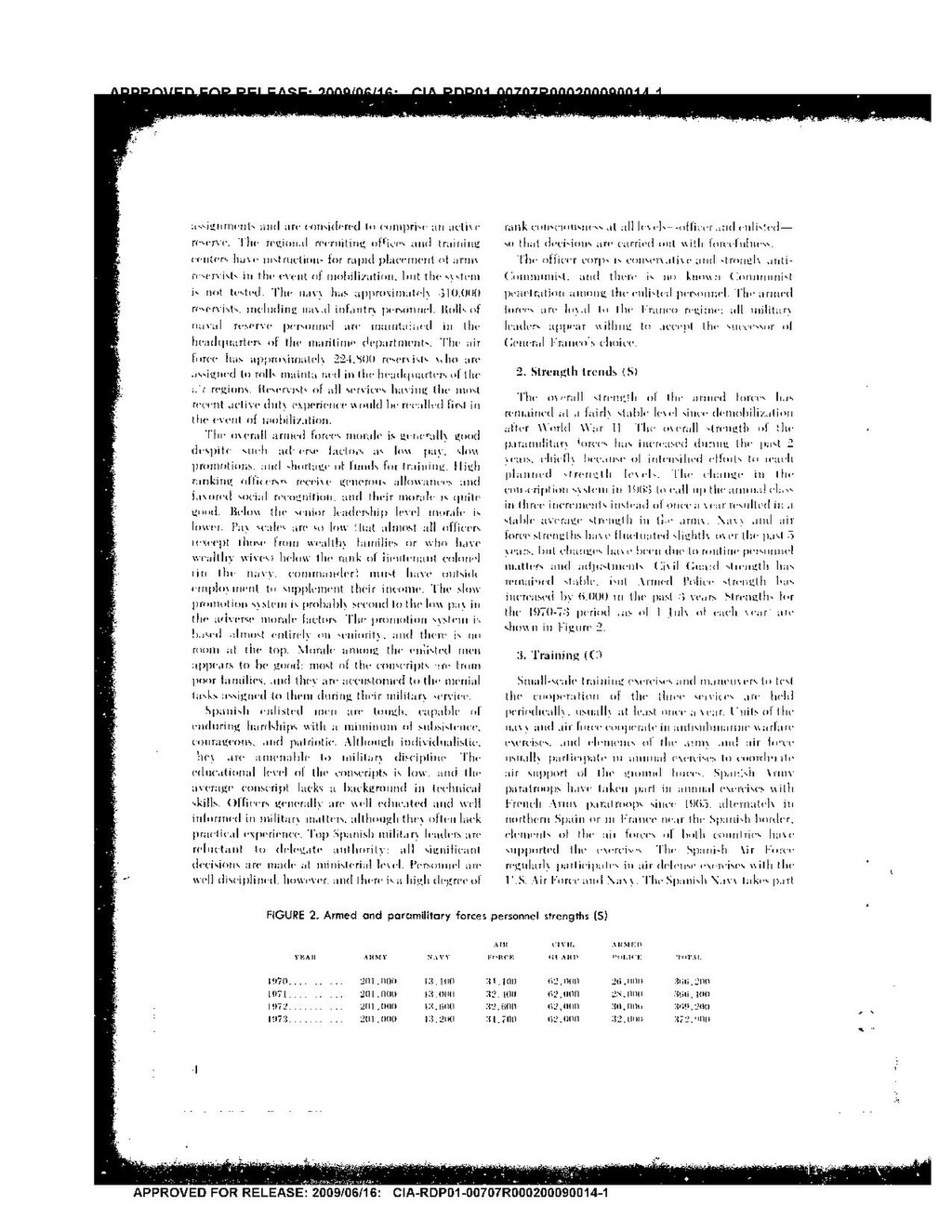APPROVED FOR RELEASE: 2009/06/16: CIA-RDP01-00707R000200090014-1
assignments and are considered to comprise an active reserve. The regional recruiting offices and training centers have instructions for rapid placement of army reservists in the event of mobilization, but the system is not tested. The navy has approximately 310,000 reservists, including naval infantry personnel. Rolls of naval reserve personnel are maintained in the headquarters of the maritime departments. The air force has approximately 224,800 reservists who are assigned to rolls maintained in the headquarters of the air regions. Reservists of all services having the most recent active duty experience would be recalled first in the event of mobilization.
The overall armed forces morale is generally good despite such adverse factors as low pay, slow promotions, and shortage of funds for training. High ranking officers receive generous allowances and favored social recognition, and their morale is quite good. Below the senior leadership morale is lower. Pay scales are so low that almost all officers (except those from wealthy families or who have wealthy wives) below the rank of lieutenant colonel (in the navy, commander) must have outside employment to supplement their income. The slow promotion system is probably second to the low pay in the adverse morale factors. The promotion system is based almost entirely on seniority, and there is no room at the top. Morale among the enlisted men appears to be good; most of the conscripts are from poor families, and they are accustomed to the menial tasks assigned to them during their military service.
Spanish enlisted men are tough, capable of enduring hardships with a minimum of subsistence, courageous, and patriotic. Although individualistic, they are amenable to military discipline. The educational level of the conscripts is low, and the average conscript lacks a background in technical skills. Officers generally are well educated and well informed in military matters, although they often lack practical experience. Top Spanish military leaders are reluctant to delegate authority; all significant decisions are made at ministerial level. Personnel are well disciplined, however, and there is a high degree of rank consciousness at all levels - officer and enlisted - so that decisions are carried out with forcefulness.
The officer corps is conservative and strongly anti-Communist, and there is no known Communist penetration among the enlisted personnel. The armed forces are loyal to the Franco regime; all military leaders appear willing to accept the successor of General Franco's choice.
2. Strength trends (S)
The overall strength of the armed forces has remained at a fairly stable level since demobilization after World War II. The overall strength of the paramilitary forces has increased during the past 2 years, chiefly because of intensified efforts to reach planned strength levels. The change in the conscription system in 1963 to call up the annual class in three increments instead of once a year resulted in a stable average strength in the army. Navy and Air Force strengths have fluctuated slightly over the past 5 years, but changes have been due to routine personnel matters and adjustments. Civil Guard strength has remained stable, but Armed Police strength has increased by 6,000 in the past 3 years. Strengths for the 1970-73 period (as of 1 July of each year) are shown in Figure 2.
3. Training (C)
Small-scale training exercises and maneuvers to test the cooperation of the three services are held periodically, usually at least once a year. Units of the navy and air force cooperate in anti-submarine warfare exercises, and elements of the army and air force usually participate in annual exercises to coordinate air support of the ground forces. Spanish Army paratroops have taken part in annual exercises with French Army paratroops since 1965, alternately in northern Spain or in France near the Spanish border; elements of the air forces of both countries have supported the exercises. The Spanish Air Force regularly participates in air defense exercises with the US Air Force and Navy. The Spanish Navy takes part
| Year | Army | Navy | Air Force | Civil Guard | Armed Police | Total |
|---|---|---|---|---|---|---|
| 1970 | 201,000 | 43,100 | 34,100 | 62,000 | 26,000 | 366,200 |
| 1971 | 201,000 | 43,000 | 34,400 | 62,000 | 28,000 | 366,400 |
| 1972 | 201,000 | 43,600 | 34,600 | 62,000 | 30,000 | 369,200 |
| 1973 | 201,000 | 43,200 | 34,700 | 62,000 | 32,000 | 372,900 |
4
APPROVED FOR RELEASE: 2009/06/16: CIA-RDP01-00707R000200090014-1
